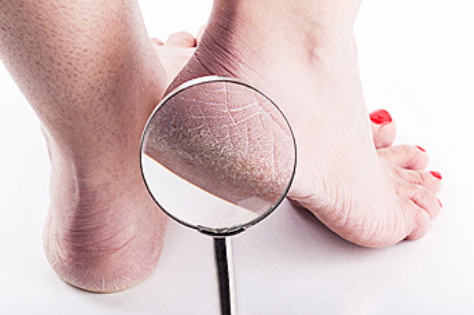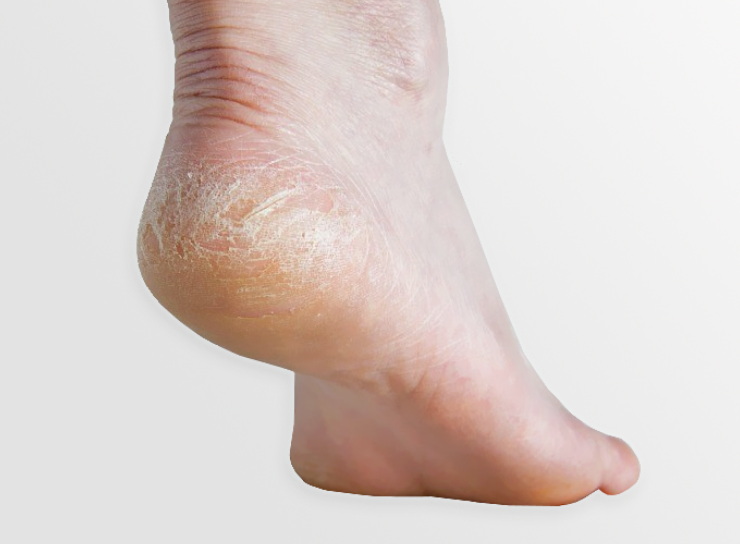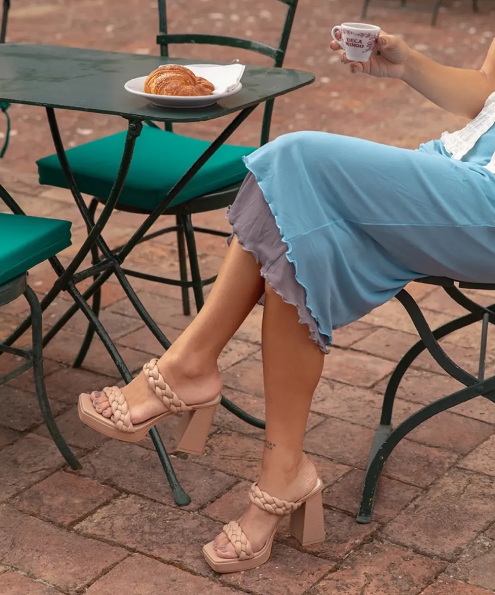Content Menu
● Understanding Cracked Heels
>> Common Causes of Cracked Heels
● Symptoms of Cracked Heels
● Preventing Cracked Heels
● Treating Cracked Heels
● Conclusion
● FAQ
>> 1. What are the main causes of cracked heels?
>> 2. How can I prevent cracked heels?
>> 3. What treatments are available for cracked heels?
>> 4. Can cracked heels lead to infections?
>> 5. Are there specific demographics more prone to cracked heels?
● Citations:
Cracked heels, also known as heel fissures, are a common foot ailment that can affect anyone, but they tend to be particularly prevalent among women. This condition occurs when the skin around the heel becomes dry and thick, leading to painful cracks that can bleed and become infected if left untreated. Understanding the causes, symptoms, and prevention strategies for cracked heels is essential for maintaining foot health.

Understanding Cracked Heels
Cracked heels are primarily caused by a lack of moisture in the skin. The feet are unique in that they lack oil glands, making them susceptible to dryness. Various factors contribute to this condition, which can lead to discomfort and even complications if not addressed.
Common Causes of Cracked Heels
1. Dry Skin: The most significant factor contributing to cracked heels is dry skin (xerosis). When the skin loses moisture, it can become rough and thickened, leading to cracks.
2. Footwear Choices: Wearing open-backed shoes such as sandals or flip-flops can expose the heels to dry air, exacerbating the problem. Poorly fitting shoes can also cause friction that leads to cracking.
3. Hot Water Exposure: Frequent exposure to hot water during showers or baths can strip the skin of its natural oils, leading to increased dryness.
4. Environmental Factors: Cold weather and low humidity levels can dry out the skin on the feet. Indoor heating during winter months further reduces humidity, contributing to dry skin.
5. Medical Conditions: Certain medical conditions such as eczema, psoriasis, diabetes, and hypothyroidism can predispose individuals to cracked heels. Hormonal changes during menopause can also increase susceptibility due to changes in skin elasticity and moisture retention.
6. Obesity: Excess weight places additional pressure on the heel pads, causing the skin to stretch and crack under increased stress.
7. Prolonged Standing: Standing for long periods on hard surfaces can lead to increased pressure on the heels, resulting in cracks over time.
8. Nutritional Deficiencies: Deficiencies in vitamins such as A, C, E, and B3 can affect skin health and contribute to dryness.
Symptoms of Cracked Heels
The symptoms of cracked heels may vary in severity but commonly include:
- Dry, rough skin on the heels
- Visible cracks or fissures
- Pain or discomfort when standing or walking
- Bleeding from deep cracks
- Thickened calluses around the heel rim
Preventing Cracked Heels
Preventing cracked heels involves a combination of proper foot care and lifestyle adjustments:
1. Moisturizing Regularly: Apply a thick moisturizer specifically designed for feet daily. Look for products containing urea or glycerin for effective hydration.
2. Avoid Hot Water: Limit exposure to hot water when bathing and use lukewarm water instead. Always moisturize your feet within 10 minutes after bathing.
3. Choose Proper Footwear: Opt for well-fitting shoes that provide support and avoid open-backed footwear whenever possible.
4. Stay Hydrated: Drink plenty of water throughout the day to maintain overall skin hydration.
5. Exfoliate Regularly: Use a pumice stone or foot file to remove thickened skin from the heels gently.
6. Wear Socks at Night: Applying moisturizer before bed and wearing socks helps lock in moisture overnight.
7. Maintain a Healthy Diet: Ensure your diet includes essential vitamins and minerals that promote skin health.

Treating Cracked Heels
If you already have cracked heels, several treatment options can help heal them:
1. Over-the-Counter Creams: Use medicated creams containing ingredients like salicylic acid or urea to soften thickened skin.
2. Professional Treatments: Consider visiting a podiatrist for professional treatments such as debridement (removal of dead skin) or custom orthotics if necessary.
3. Home Remedies: Natural remedies like coconut oil or olive oil can be effective moisturizers for cracked heels.
4. Avoid Going Barefoot: Protect your feet by avoiding walking barefoot on hard surfaces.
5. Consult a Doctor: If cracks are severe or show signs of infection (redness, swelling), consult a healthcare professional for appropriate treatment.
Conclusion
Cracked heels are more than just a cosmetic concern; they can lead to pain and complications if not addressed properly. Understanding the causes and implementing preventive measures is crucial for maintaining healthy feet. Regular moisturizing, proper footwear choices, and attention to dietary needs can significantly reduce the risk of developing this condition.

FAQ
1. What are the main causes of cracked heels?
Cracked heels are primarily caused by dry skin, improper footwear, environmental factors like cold weather and low humidity, medical conditions such as eczema or diabetes, obesity, prolonged standing, and nutritional deficiencies.
2. How can I prevent cracked heels?
To prevent cracked heels, regularly moisturize your feet, avoid hot water exposure, wear proper footwear, stay hydrated, exfoliate regularly, wear socks at night with moisturizer, and maintain a healthy diet rich in essential vitamins.
3. What treatments are available for cracked heels?
Treatment options include using over-the-counter creams with salicylic acid or urea, professional podiatric treatments like debridement, home remedies like coconut oil or olive oil applications, and consulting a doctor if infections occur.
4. Can cracked heels lead to infections?
Yes, if cracks are deep enough they can bleed and become infected leading to conditions such as cellulitis if not treated promptly.
5. Are there specific demographics more prone to cracked heels?
While anyone can develop cracked heels, women are often more affected due to footwear choices and hormonal changes during menopause which affect skin elasticity and moisture retention.
Citations:
[1] https://www.medicinenet.com/why_do_womens_feet_get_dry_and_cracked/article.htm
[2] https://pedestrianproject.com/blogs/foot-knowledge/what-causes-cracked-heels
[3] https://www.pedifix.com/t-dryskin.aspx
[4] https://create.vista.com/photos/cracked-heel/
[5] https://www.youtube.com/watch?v=AJjHd86mzUU
[6] https://www.youtube.com/watch?v=1alv5R9CEm8
[7] https://newsnetwork.mayoclinic.org/discussion/mayo-clinic-q-and-a-take-steps-at-home-to-manage-dry-cracked-heels/
[8] https://footdoctorbellevue.com/component/k2/item/154-causes-of-cracked-heels.html
[9] https://www.footdoctorteaneck.com/blog/item/84-what-may-be-causing-your-cracked-heels.html
[10] https://www.dreamstime.com/photos-images/cracked-heel.html
[11] https://www.webmd.com/skin-problems-and-treatments/what-to-know-cracked-heels

















